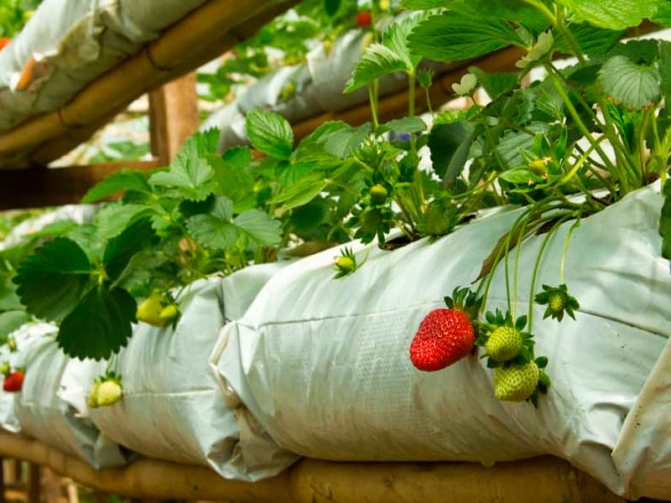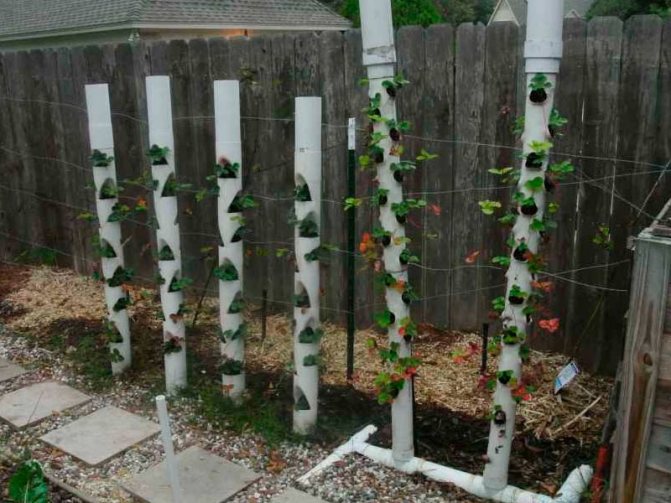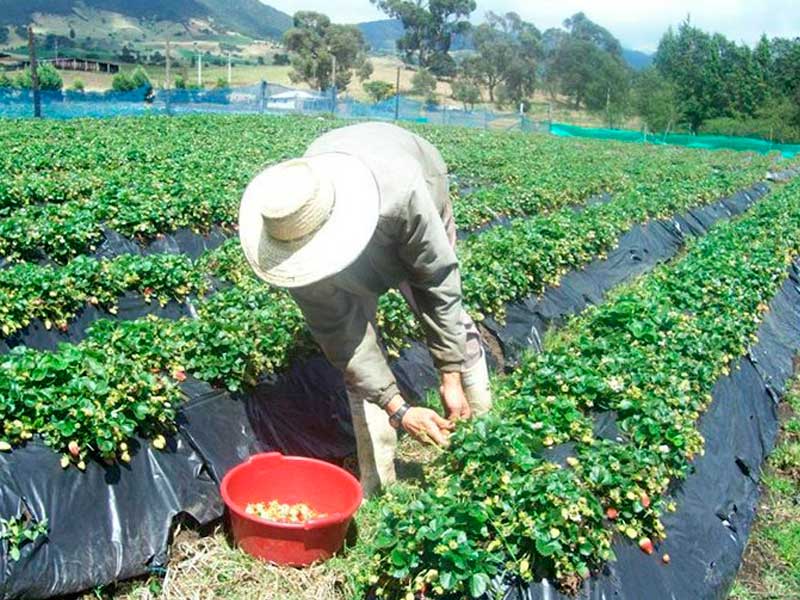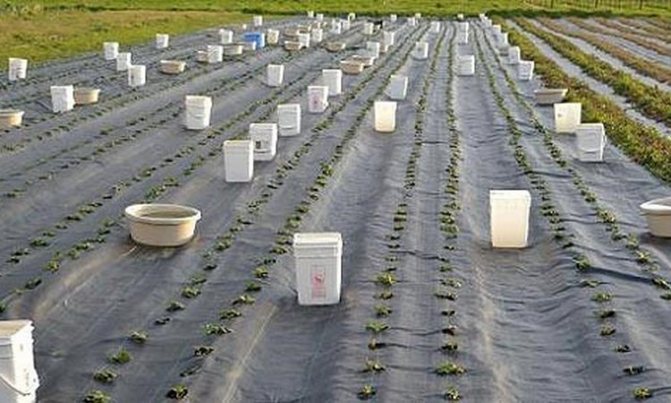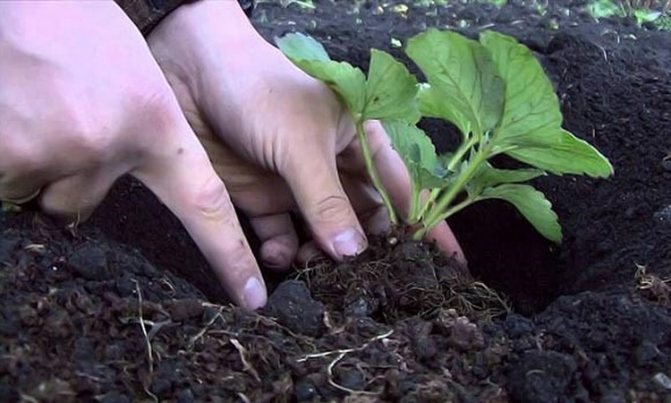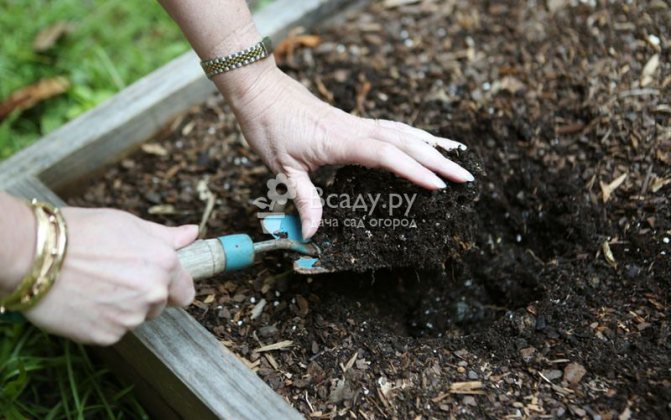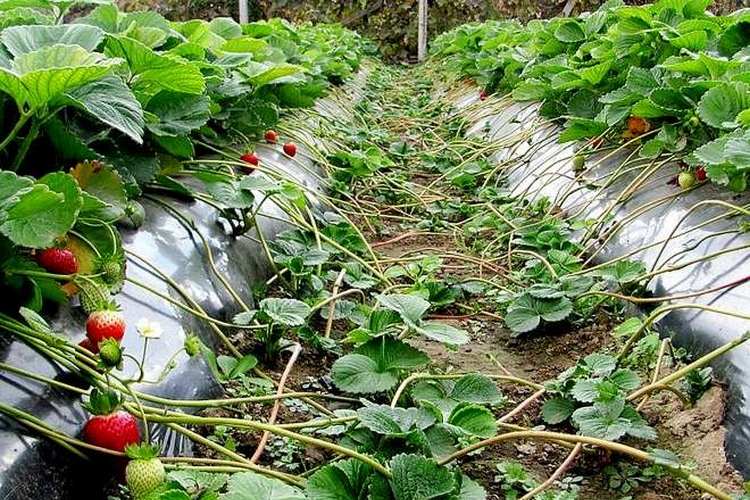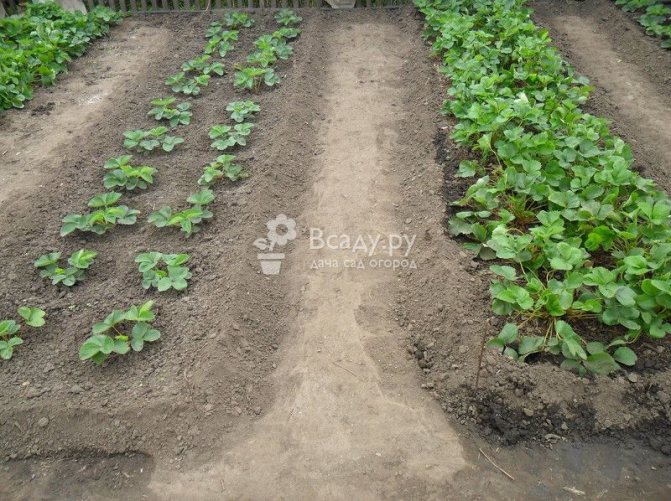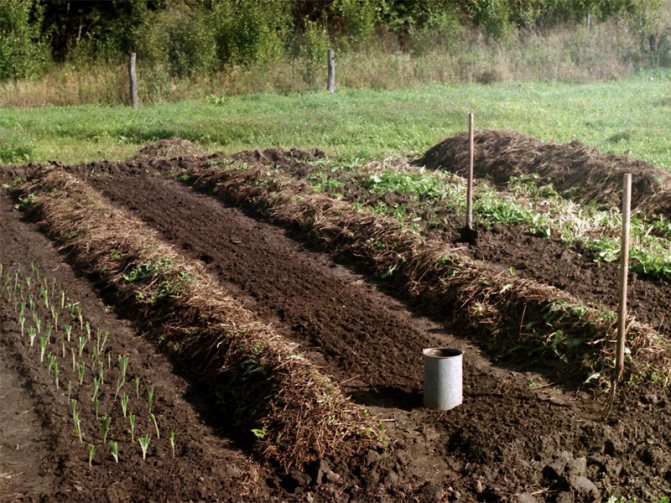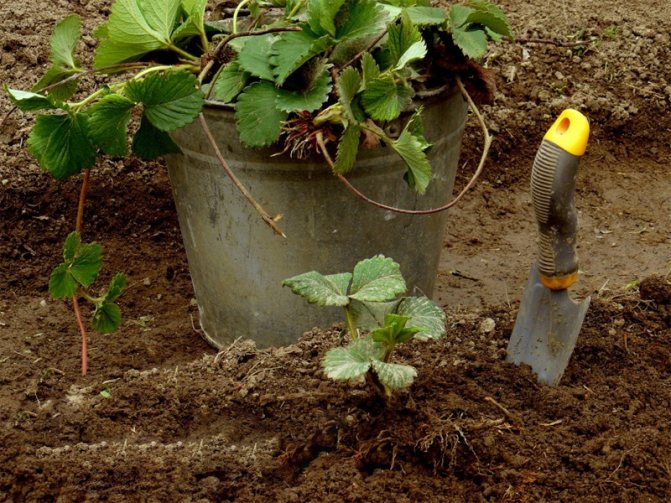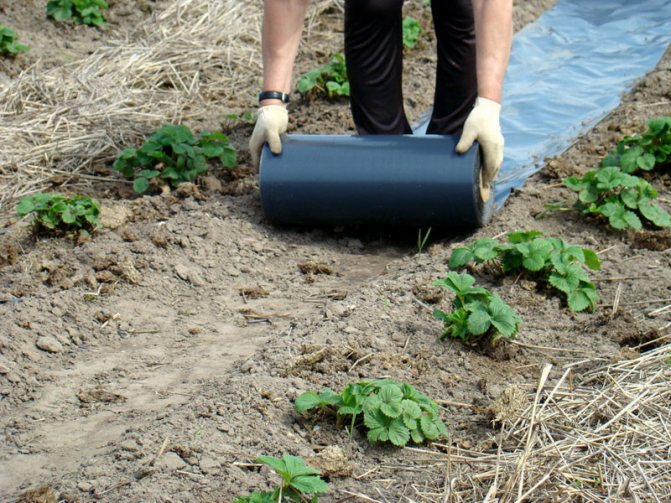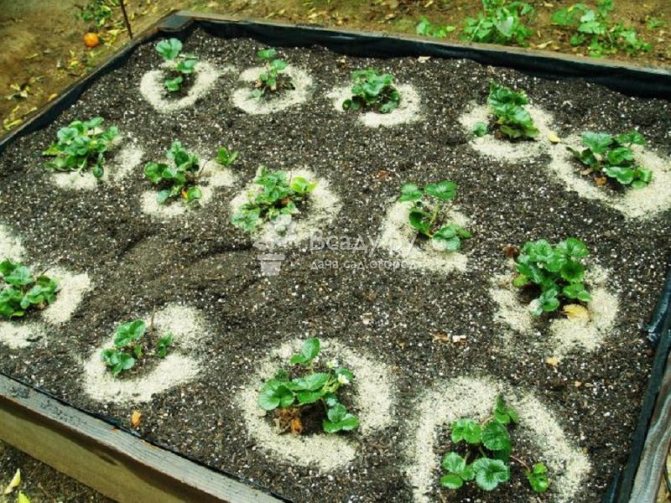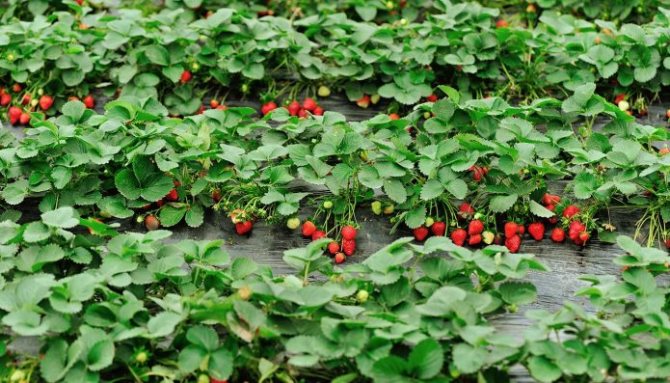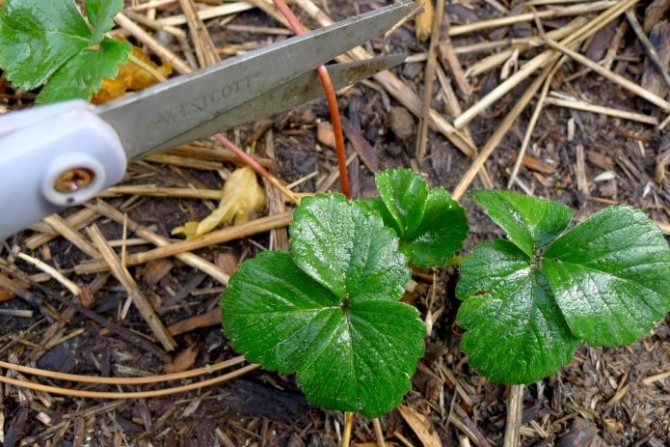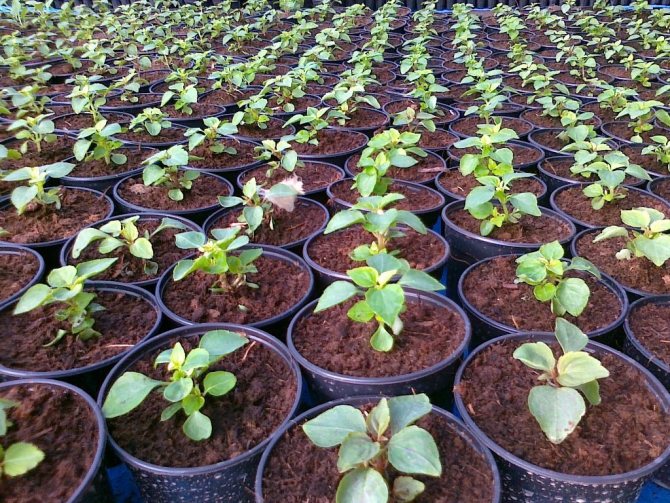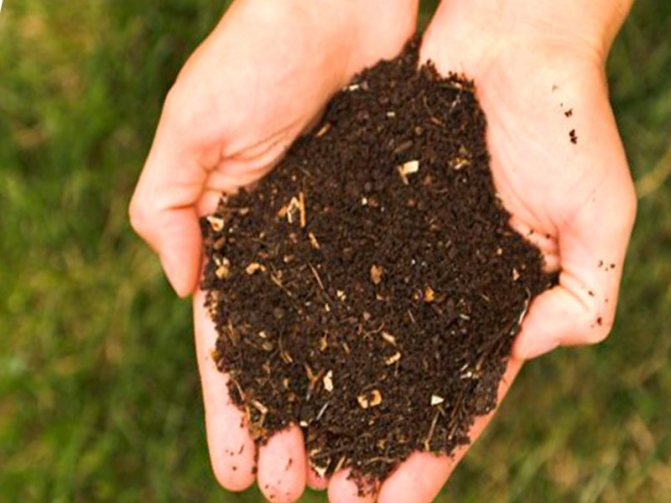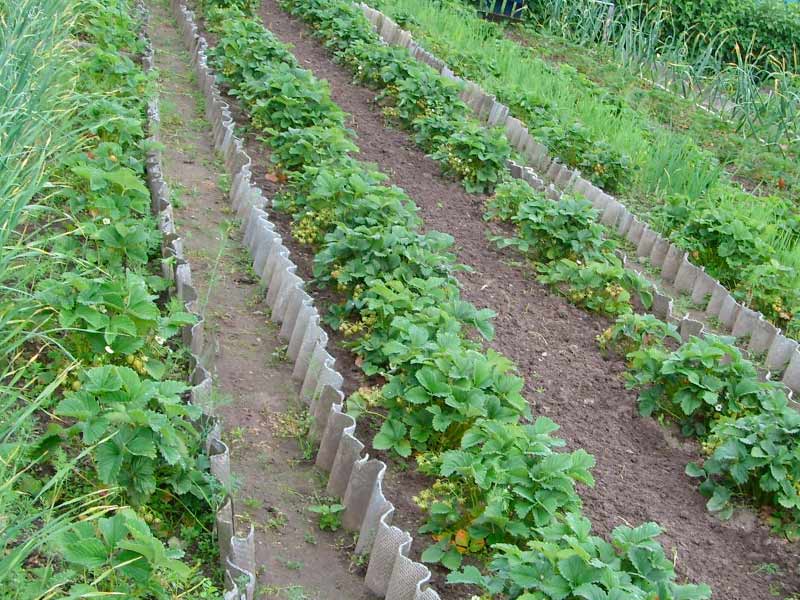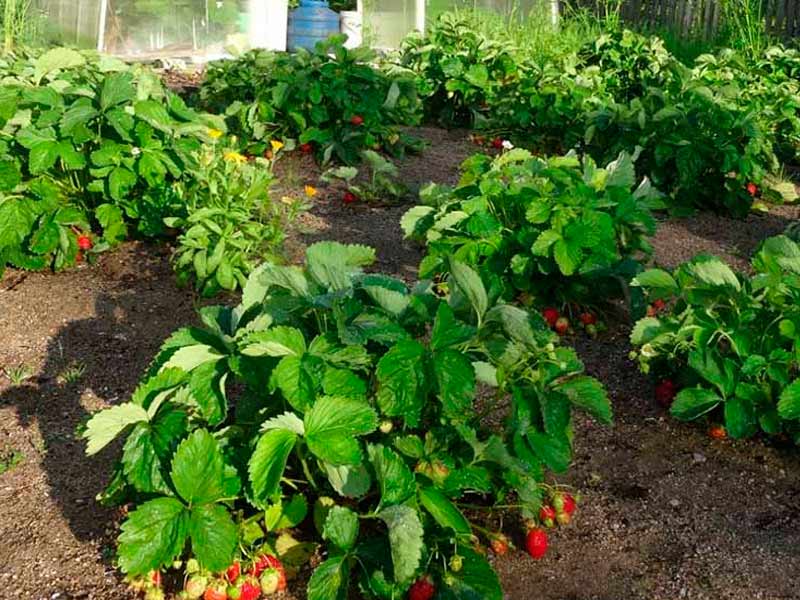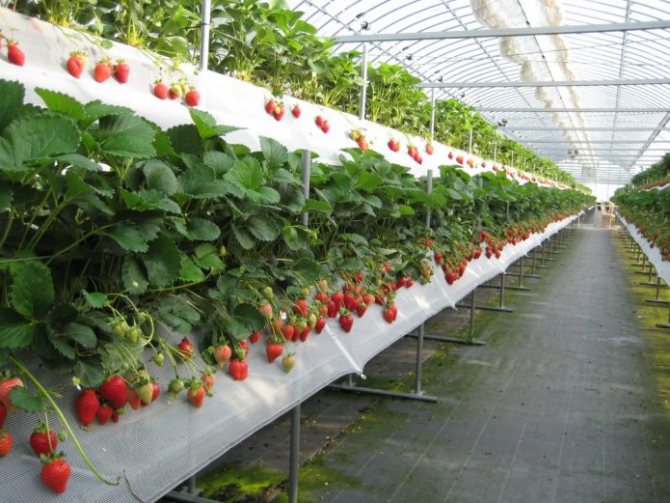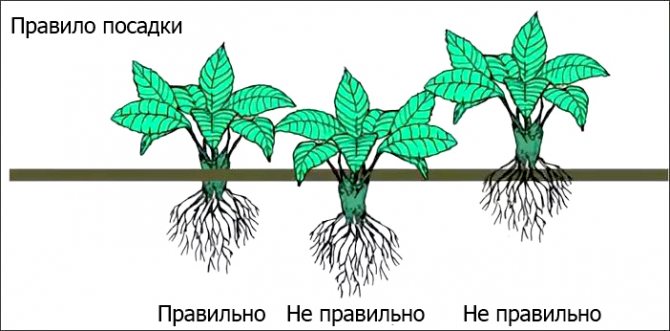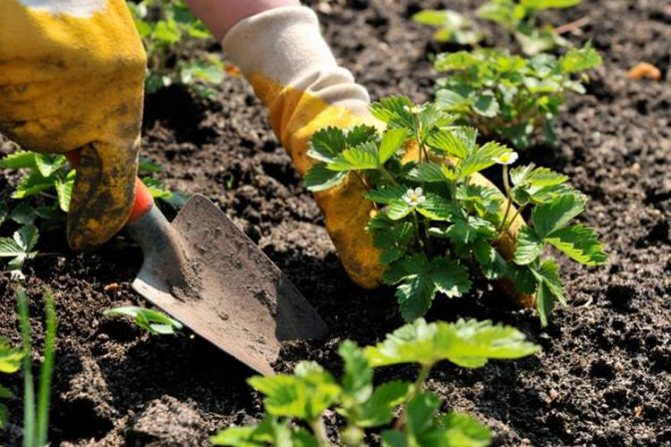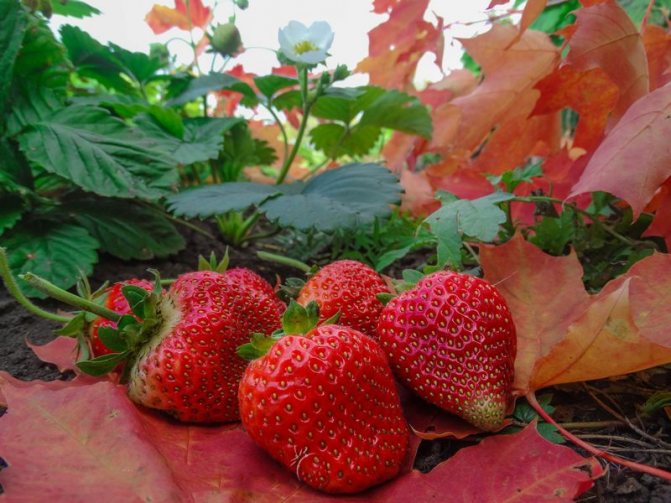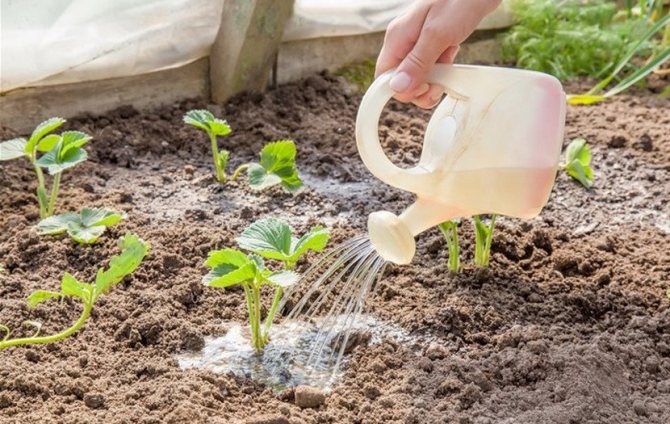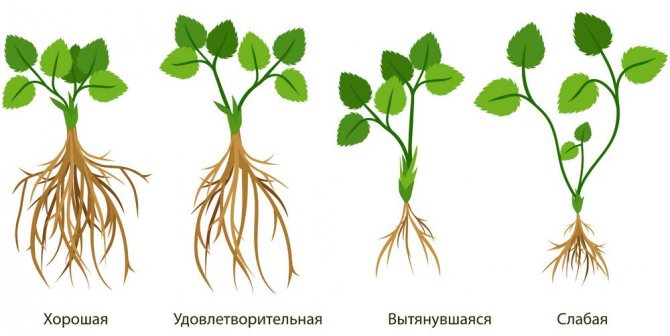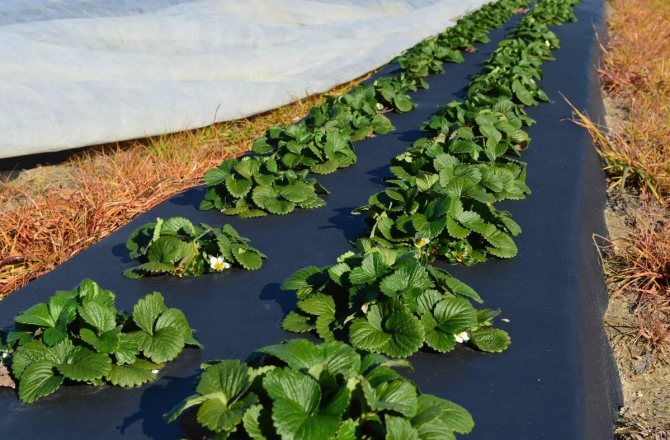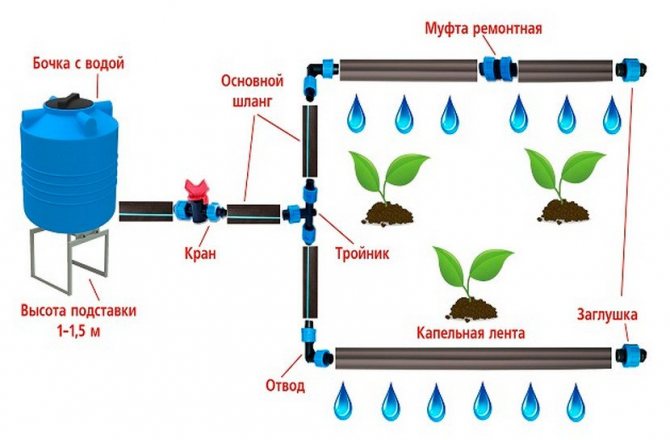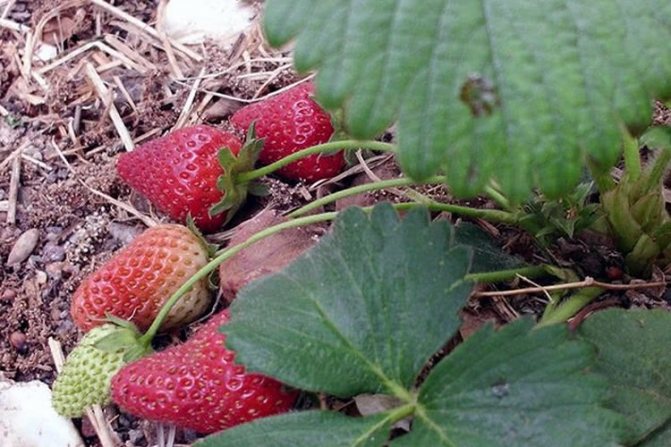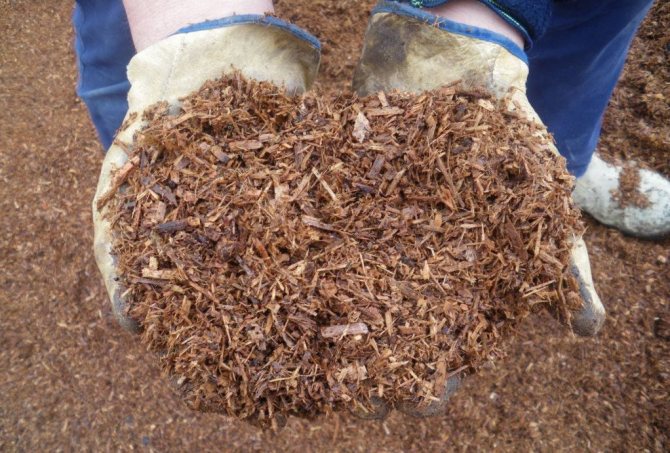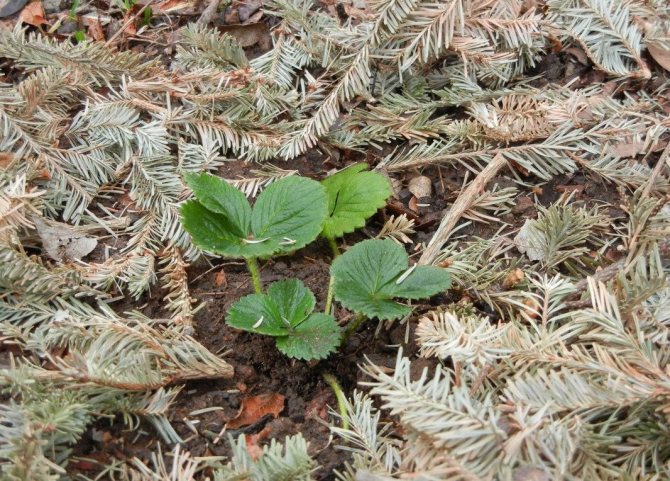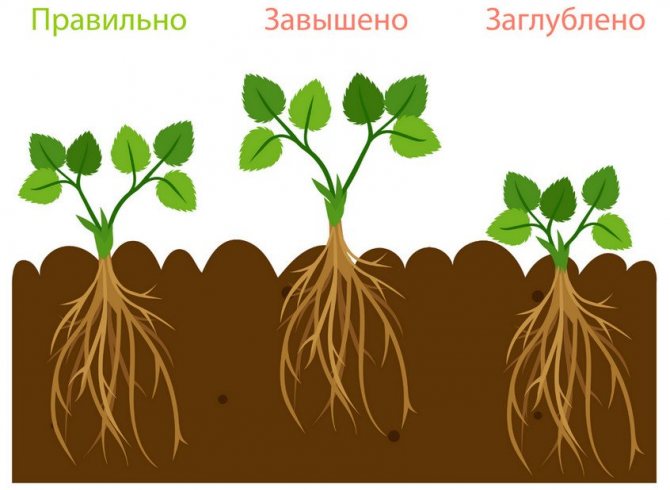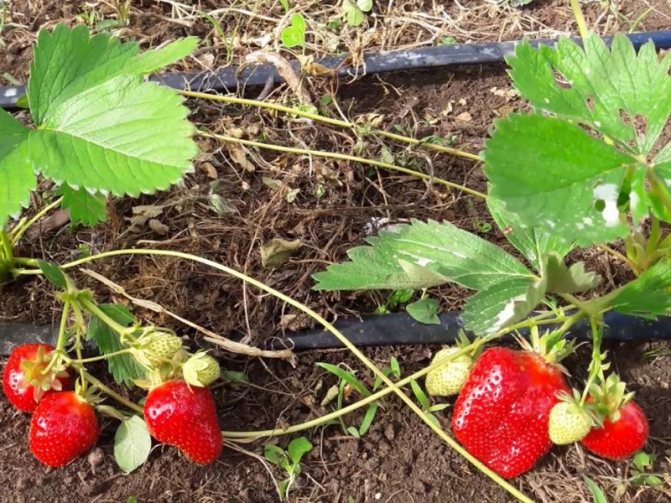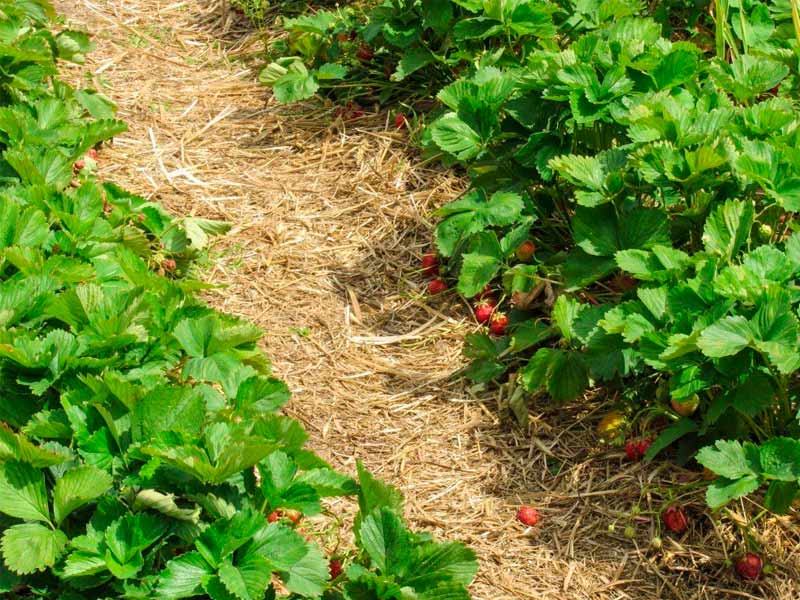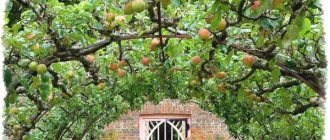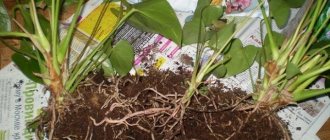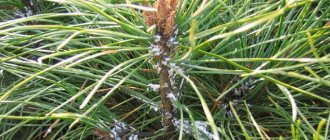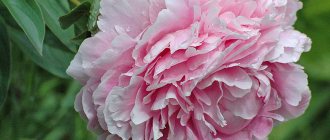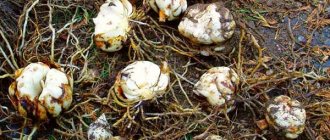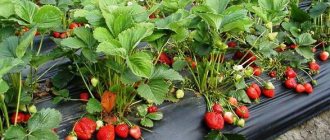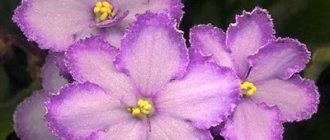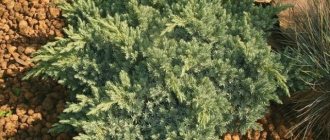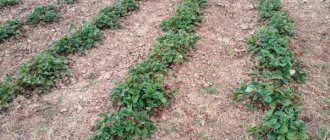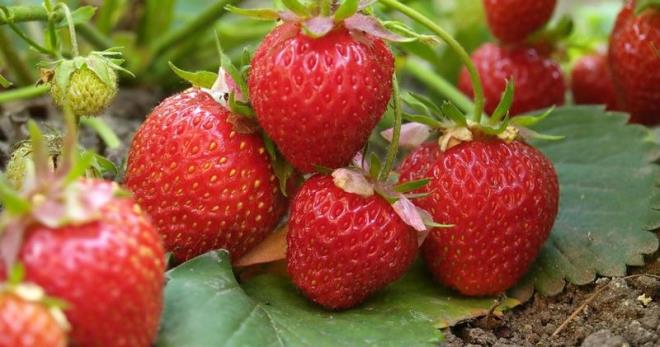
Not all gardeners, especially beginners, know how to plant and care for strawberries. The amount of the crop directly depends on compliance with agrotechnical measures, the use of new technologies, high-quality planting material, competent and regular care. Growing strawberries is not easy, it requires strength, patience and time.
Why is it best to transplant in the fall season?
You can plant the berry at any time. It can be spring, summer or autumn. But is it possible to transplant strawberries in October? Quite a difficult question.
Experienced gardeners recommend using the autumn period to update the strawberry garden. At this time, the earth is perfectly moistened and is still quite well warmed up. The sunlight is no longer intense enough to burn freshly transplanted, fragile bushes.
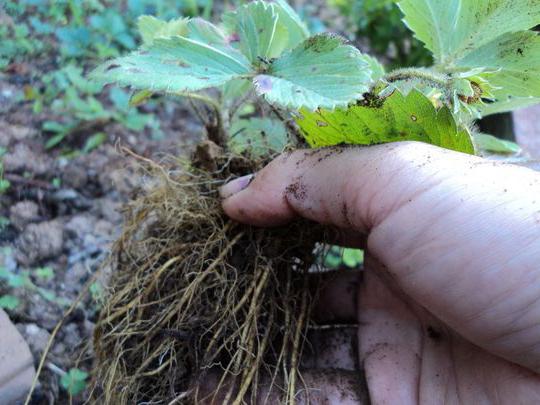

The best time to plant berries is late August and early October. But this statement will be true for those areas where winter comes quite early or corresponds to the calendar schedule. For the southern regions, the answer to the question whether it is possible to transplant strawberries in October will be positive.
And now about the transplant itself.
Subtleties of autumn planting of strawberries


Autumn is the time when we reap the fruits of our own labors and plan the future of our garden. Strawberries are called the queen of berries, so they are always allocated the best and largest areas. You can plant your antennae and horns all summer, but purchased ones appear only in spring or autumn. Autumn planting is a priority for many gardeners, it has its own benefits and technology.
Soil preparation
Planting strawberries in October involves classic soil preparation. The best soil for a plant will be black soil with a sufficient content of ash and forest soils.
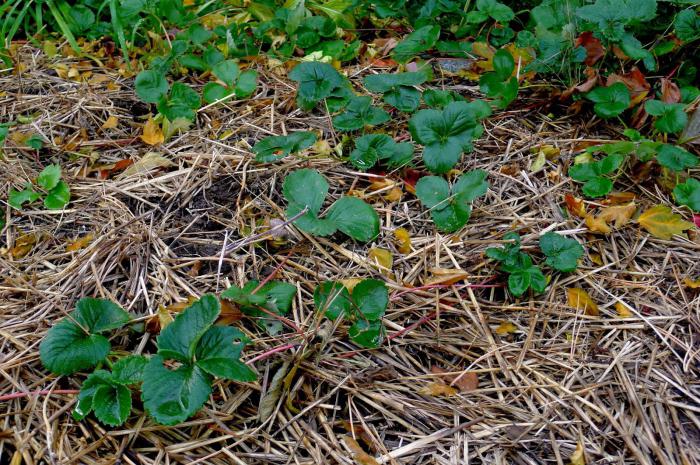

Before you start planting plants, it is recommended to carry out the following agrotechnical measures:
- Be sure to select all insect larvae during the digging of the site. The Colorado and May beetle, wireworm is a terrible danger to a young fragile bush. If it is not possible to select manually, then it is necessary to cultivate the soil. For this, an ammonia solution is prepared and the area is watered. Or, at first, it is sown with lupine or beans, which become a real poison for the larvae.
- The land must be completely cleared of weeds. In case of an excessive amount of weeds, the soil must be sprayed with a special solution, for example, "Roundal".
- The land must be carefully dug up or plowed up. It all depends on the area of the site.
- Fertilization is also mandatory. The composition of the top dressing will depend on the chemical composition of the earth. The most recommended additives are manure, humus or humus. One meter of the bed should have at least 6 kilograms of top dressing.
- Strawberries do not like a high salt content, and therefore chemical fertilizers should be applied two weeks before planting. Recommended fertilizers: 40 grams of superphosphate and 20 grams of potash compounds for each square meter of the garden.
- If the land has high acidity, then it is necessary to take care of a decrease in the indicator in advance. To do this, dolomite flour is scattered annually on the site. Plants from the green manure category will help to enrich the soil with nitrogen.
How to plan a fruit tree garden
Planting trees and shrubs has its own characteristics. Before disposing of the land, it is recommended to develop a design project in compliance with the proportions of the site and indicating the location of all objects.
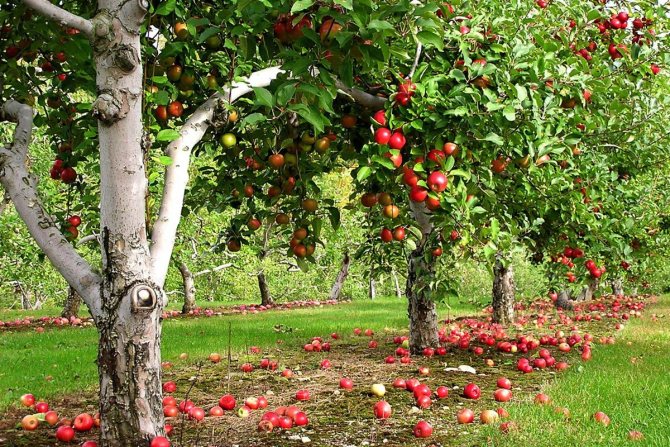

Garden
There are special computer programs for landscape design that help to plan the site, creating comfortable conditions for all plants and for the life of the owner in this garden.
Even a small suburban area can be turned into a garden. First, you should decide what species you want to plant. In this case, it is necessary to proceed from the characteristics of the climatic zone, soil and relief of the land plot.
The most convenient form for planning a garden plot is a rectangle. On the plan of a site of this shape, all buildings are marked, the remaining territory is divided into sections with clear boundaries. The sections are planted with fruit and berry crops and ornamental plants, based on the individual preferences of the owner of the site. This layout method is suitable for those with narrow and long sections.
The opposite of a rectangular plot is a circular layout. Its main elements are flower beds and lawns, the creation of patio yards. With this design, it is recommended to hide straight lines and corners on the territory of the site behind climbing plants.
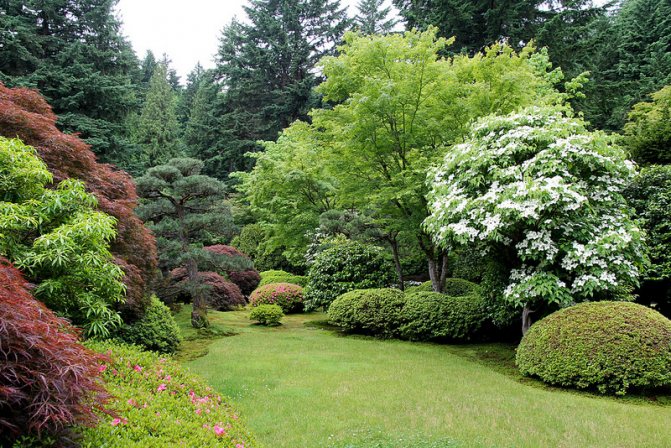

Plants in the garden
A professional landscape designer will help you to correctly design a round concept. The easiest way to embody the concept of a round shape in a square area.
The diagonal plot layout is ideal when you need to visually increase the size of a very small plot. With a diagonal layout, the house is the center of the composition, from which the plantings depart at an angle of 45 °. Depending on which direction the lines of the garden objects diverge, the effect of a longer or wider area will be created.
If the site has a complex relief, natural reservoirs, then a free type of layout is suitable for it. This form requires minimal maintenance. However, even for this type of landscape design, accents are required.
How to plant strawberries: options
Transplanting strawberries in the fall, in October, is no different from the usual. Therefore, all known methods can be applied:
- In one line. In this case, it is necessary to leave at least 70 centimeters between the rows, and the plants should be located about 20 centimeters from each other.
- In two or more lines. Here, the bushes are arranged in the form of classic beds, forming ribbon plantings. The distance between them is about 70 centimeters, and the lines of the bushes should be separated from each other by 30 centimeters.
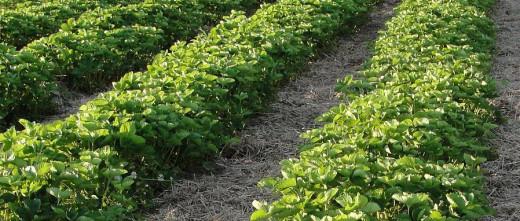

A berry planted in one of these ways will grow in the most optimal conditions for it. At the same time, the probability of strawberry disease will be reduced. Soil cultivation will also not cause much trouble. Planting strawberries in October using the one-line method can be done under trees.
How close can different varieties be planted?
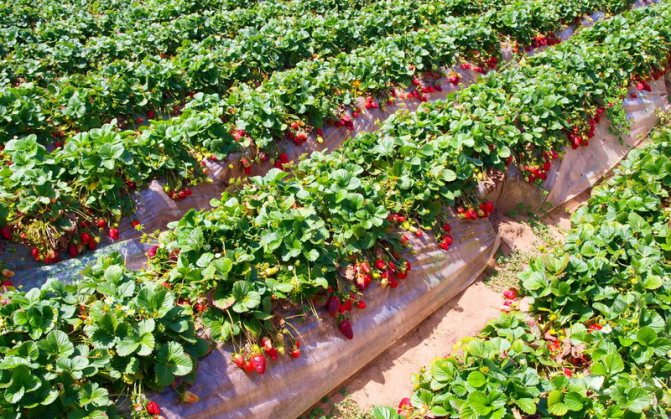

Some gardeners are interested in what effect different varieties of this culture have on each other, provided they grow in the same space? In accordance with biological laws, planted different varieties of strawberries do not affect their neighbors in any way.
This is explained by the fact that the resulting berries are carriers of only certain varietal qualities of the mother plant, not at all the result of additional pollination from neighboring varieties. For this reason, such a neighborhood of different varieties of crops on the same bed is quite acceptable.
Although the experience of plant cultivation points to one argument that convinces us of the need for separate plantings.First of all, this requirement is caused by the different ripening period of berries and the requirements for caring for them at different stages of the growing season.
It is much easier to care for and harvest certain varieties that are planted separately. When growing strawberries, it is also important to keep the distance between rows and bushes.
The classic ways of planting a crop are:
- Single-line, in which it is required to maintain a distance of 70 cm between the rows of seedlings.Strawberries are placed at a distance of 15 cm from each other.
- Two-line method. This type of growing is recommended for the summer season. When using it, the distance between the bushes should be about 30 cm.As for the seedlings, they are placed at a distance of 20 cm.
Gardeners and other types of plantings are used that require different approaches. It:
- landing by nests;
- seating in separate bushes;
- carpet planting method.
Nests
The planting scheme is as follows: 1 bush in the center, then 6 around it. In this hexagon, strawberry nests are located at a distance of 8 cm, and between the plants themselves, the distance is 25 cm. If there is an additional row, it must be placed at a distance of 35 cm in order to provide optimal conditions for growth.
The advantages of the technique are:
- in the possibility of obtaining excellent harvests from 1 plantation;
- in saving space;
- in the convenience of caring for the site.
The disadvantages include the fact that a lot of soil is required in which the culture will be planted.
Bushes
Novice gardeners grow strawberries by planting individual bushes. This method is based on maintaining a significant distance between the bushes - 45-60 cm. Although even such a procedure for keeping a large distance between the bushes is not able to ensure their isolation among themselves.
In order to avoid overgrowing the area, it is necessary to eliminate the whiskers on each plant.
If these requirements are met, you can get:
- high yield;
- large berries;
- low risk of the spread of pests and diseases.
The disadvantages include:
- the need for constant soil care due to the spreading of the plantation;
- the occurrence of some inconvenience at the time of loosening, weeding, mulching and watering.
Carpet
In the absence of time to care for the plantation of this crop, planting with a carpet is used. This method eliminates the need to pluck a mustache, they grow in all directions, giving the opportunity to develop new bushes. Strawberries get the opportunity for free growth, unimpeded development, thanks to which there is a chance to determine the potential and value of each of the planted varieties.
The spacing of the rows is associated with such an indicator as the bushiness of the variety. It can be on average almost 1 m. For mustache-free strawberries, the distance is much less.
It is 20 cm between bushes and 40 cm between rows. As a rule, the carpet method is resorted to when planting a crop in two rows, then a wide passage of 70 cm is made and the plants are again planted in two rows.
Positive parameters:
- lack of weeds due to dense thickets of strawberries;
- soil moisture is maintained.
The main disadvantages in the carpet version are:
- constant reduction in the size of the berries;
- poor productivity.
Transplanting strawberries in autumn, in October
If you decide to get the harvest for the next season, then you need to choose two-year-old specimens as seedlings. Please note: there should be at least three leaves on the bush if you take young rosettes. The root lobe should also be well developed. Dig out the bushes just before planting. When this is not possible, be sure to keep the root system of the seedlings moist. To do this, you can simply wrap it in a wet cloth. We remind you once again that you can plant strawberries in October, but only in the southern regions.
It is best to replant the berry in cloudy weather. The wells should not be too large. Focus on the root system. The roots should be completely unfolded. Also, it is impossible to deeply deepen the bushes - the "heart", from where the leaves and peduncles grow, should remain on the surface of the garden.
Planting care
Since the garden bed is prepared in advance, the post-plant care of strawberries in October will consist of sheltering the plantings. Of course, before the onset of stable frosts, the plants will have time to take root, but it will not hurt to help them with this. Therefore, it is worth covering the beds with any covering material.
We hope that you have received the answer to your question, is it possible to transplant strawberries in October and how to care for them. Happy harvests!
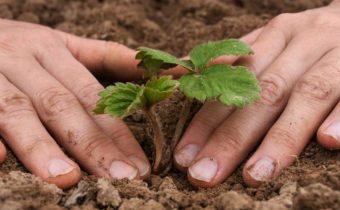

Experienced gardeners try to plant strawberries in late summer or autumn in order to get large and early berries next spring. However, planting strawberries in the fall in open ground and under agrofibre has its own differences and features, which we will touch on in this article today.
When to plant strawberries - fall, spring or summer and why
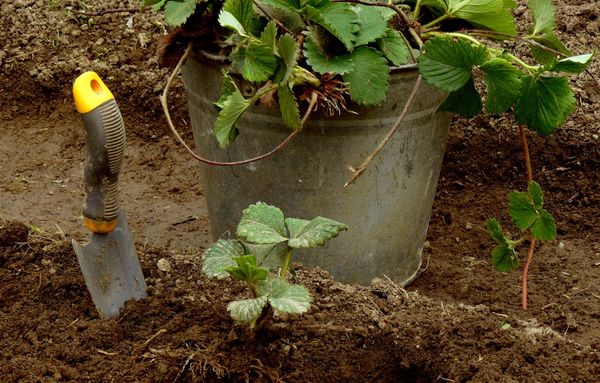

Along with the traditional spring planting of strawberries, gardeners also practice planting strawberries in the fall in open ground. Many gardeners do not recommend waiting for the onset of autumn and argue that planting strawberries in summer contributes to better survival of seedlings and normal overwintering.
However, there are skeptics among gardeners who claim that during autumn planting, seedlings can freeze in winter, which ultimately will definitely negatively affect the overall harvest of berries.
In regions with little snow in late autumn, strawberry plots are covered with a thick layer of mulch. It will protect strawberry seedlings from freezing.
Well, now let's decide when to plant strawberries in the fall in order to achieve good rooting. It has been experimentally established that the planting of the culture should start after August 15 and finish the work before the end of September.
This period is favorable in the sense that the strawberries, before hibernation, will not have time to infect harmful insects and pathogens. Having sustained these planting dates, we will get strong plants that go into winter with well-developed roots.
Now we will consider in which month to plant strawberries in the fall with a mustache for its better survival. It should be borne in mind that when planting strawberry seedlings grown from a mustache, they must be given more time for rooting, having completed all planting work 10 days earlier. It turns out that when using strawberry whiskers as planting material, the planting time falls on August-September.
In addition, weather conditions need to be considered when determining when to plant strawberries in summer or fall. The optimal conditions are those under which during the day the air temperature will be from 10 to 20 degrees above zero, and at night the thermometer will linger at around +5 degrees.
Summer and early autumn planting of strawberries has advantages and disadvantages that require detailed consideration. There are more advantages to these planting dates than disadvantages, therefore the bulk of gardeners are adherents of autumn planting.
Benefits of summer and autumn planting
Planting strawberries in summer and autumn has advantages over spring planting, which are as follows:
- In autumn, seedlings are represented by a large assortment offered by various nurseries, which leads to a large selection of planting material, in relation to the conditions of your region.
- When planting in the fall, it is possible to get a berry harvest for the next year, since strawberry bushes acquire a powerful branched root system by spring, capable of ensuring normal flowering and berry formation.
Like any method, the autumn planting of culture has not only positive aspects, but also some disadvantages.
Disadvantages of autumn planting
The disadvantages of this planting method are few:
- Requires preliminary preparation of the beds before planting. The soil should be dug up and fertilized with chemical and organic fertilizers.
- Planting strawberries at these times is always fraught with the risk of seedlings freezing. This is aggravated by the fact that it is almost impossible to predict in advance when a steady cold snap will come. In this regard, with a sharp change in temperature with a transition to minus, especially with a late planting, the bushes do not have time to root well and can freeze out.
As you can see, this method has significantly fewer disadvantages than positive aspects. That is why this method is gaining more and more adherents.
When to plant strawberries in autumn and summer
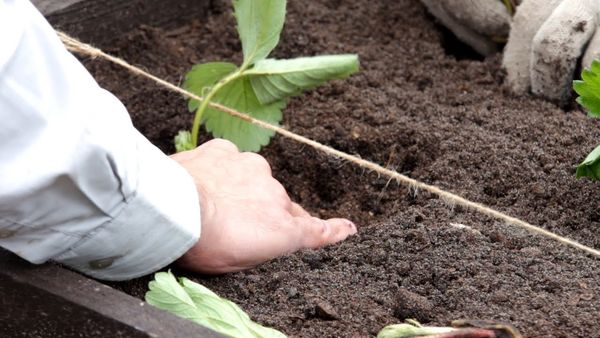

It is impossible to give an unambiguous answer to this question, suitable for all localities of the country. The weather conditions inherent in a particular region determine the time for planting strawberries.
Depending on the region
In the Urals, the time for planting strawberries begins from the last days of July to September 10, because there are frosts in early autumn.
In the Far East, weather conditions make it possible to extend the planting period until the end of the first autumn month.
The south of Russia, Moldova and Ukraine can confidently use the whole October for planting. And in Siberia, it is imperative to have time to finish planting work before August 16, or at best before the end of summer, because there are early frosts that can destroy unrooted seedlings.
The timing of planting strawberries in the conditions of Central Russia and in the Moscow region is rather blurred: from the beginning of August to the end of September.
Approximately the same landing dates as in the Moscow region are adhered to in Belarus and the Leningrad region.
According to the lunar calendar 2019
If you tend to do all the work in the garden according to the lunar calendar, then information about the days when to plant strawberries in autumn and summer will be useful. The moon is known to have a great influence on all plants. On a full moon, for example, there is strong growth and movement of juices. At this time, it is better to abandon all gardening work, with the exception of harvesting. The fruits will be more juicy.
Auspicious days for summer and autumn planting of strawberries in 2019 according to the lunar calendar are the following numbers:
- July - 25-31;
- August - 2-8, 11-13, 17, 18, 26-28;
- September - 1-5, 7-10, 17-24;
And for trimming a strawberry mustache, the following days are best suited for the lunar calendar:
- April - 4-6, 17-29,
- May - 1-3, 19-26,
- June - 2-4, 11-13, 15-17, 20-22, 27-30,
- July - 1-3, 17-20, 27-29,
- August - 13-16, 18-21, 23-26,
- September - 15-17, 19-22, 28-30,
- October - 7-9, 12-14.
As you can see, the terms of work associated with the summer and autumn planting of strawberries according to the lunar calendar are quite extended. In any year, you can easily choose a favorable day and land at the optimal time, falling on the growing moon.
With early planting of early maturing varieties, you can count on a harvest next spring. However, the normal harvest of berries, characteristic of the cultivated variety, will be removed only in the second year of cultivation.
Favorable and unfavorable neighbors of strawberries
When planting different crops in the garden, it is very important to take into account the neighborhood and compatibility, because different cultures are capable of exerting both positive and neutral influences on each other, as well as negative ones. Because of the latter, growth inhibition, a decrease or lack of fruiting is possible.
Unfavorable neighbors
If you want to grow healthy strawberry bushes and get a good harvest, then you need to fence garden strawberries from the neighborhood with bad associates:
- raspberries,
- any representatives of the nightshade (but especially tomatoes and potatoes),
- Jerusalem artichoke
- sunflowers,
- cabbage,
- representatives of the clove family.
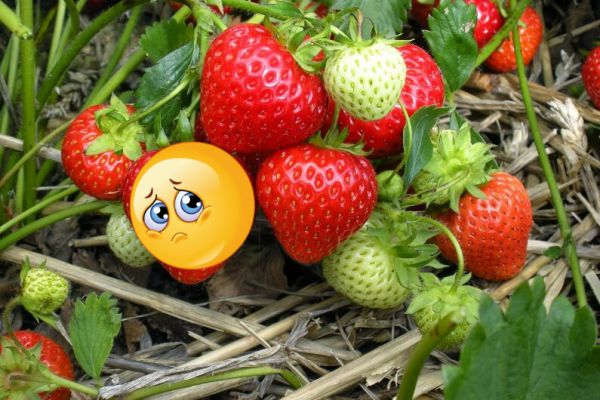

Positive neighbors
You can and should plant strawberries next to:
- carrots,
- radish,
- radish,
- onions
- garlic
- legumes,
- parsley
- sage
- spinach,
- sorrel,
- salad,
- you can also plant it next to good neighbors - beautiful flowers: irises, tulips, marigolds, delphinium, clematis, peonies.
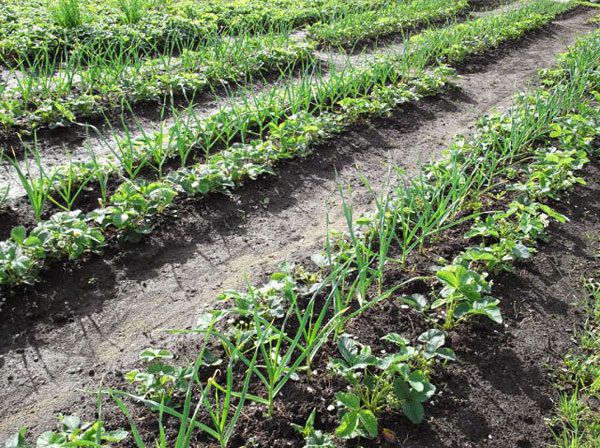

Especially beneficial effect is exerted by legumes - they contribute to loosening the soil, enrich the soil with elements useful for strawberries. BUT garlic, onion, marigold, parsley and sage scare off crop pests and prevent some diseases.
How to plant strawberries in autumn and summer correctly
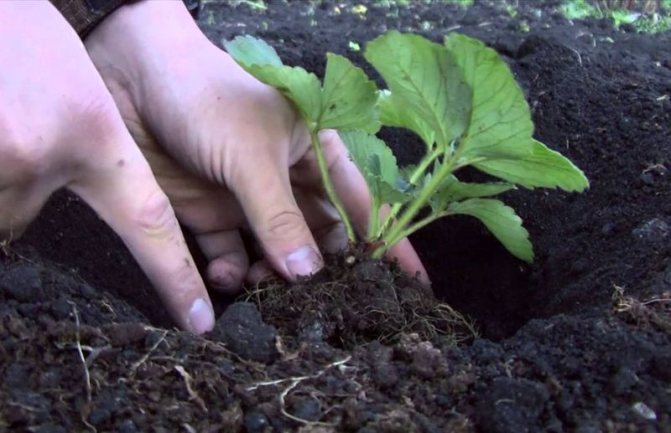

Even before purchasing, you need to learn how to choose viable seedlings of culture, competently prepare the soil on the site, study the requirements of the culture, planting technology, in order to understand how to plant strawberries in the fall.
By doing this preliminary work, you will greatly shorten the adaptation period for seedlings and ensure yourself the planned result.
The correct choice of planting material
The correct formation of strawberry bushes is mainly influenced by the selection of strong and viable seedlings.
For disembarkation, you can use the following material:
- buy high-quality varietal material;
- apply for planting, self-grown mustache bushes.
In the fall, sellers offer a large selection of seedlings, and it is possible to choose the best ones according to the following indicators:
- root collars should have a diameter of 6-7 mm;
- the roots of the seedlings should be branched, have a fibrous shape and a length of 6 cm or more;
- excellent strawberry seedlings should have 3 to 5 healthy leaves and a growing point in the center of the bush.
Preparation of seedlings
The acquired seedlings, before planting them in the soil, should be properly prepared. First of all, they are subjected to a visual inspection, and then proceed to the following actions:
- remove excess leaves, leaving 3-5 of the best;
- if the roots are too long, they must be shortened, leaving no more than 10 cm in length;
- we treat the bushes with a fungicidal composition against fungal diseases;
- before planting, keep in a cool, dark place, sprinkling the roots with earth, preventing them from drying out;
- an hour before planting, the seedlings are watered and the roots are soaked.
As for soaking the roots, this can be done as follows:
- in an infusion of garlic to repel harmful insects;
- in a muddy clay to prevent the roots from drying out and increase the survival rate of seedlings;
- in a growth biostimulator - for fast rooting and stimulation of the development of a young plant.
Having done these steps, we can assume that the preparation of the material for planting is complete.
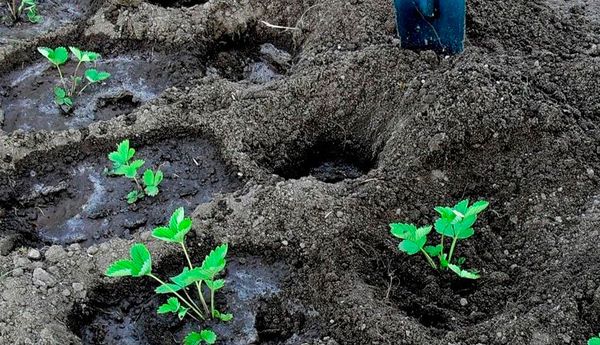

Seat selection
An equally important factor when planting strawberries in the fall is the choice of location for the site. The yield and size of the berries will depend on this in the future. The site should be well lit, away from large trees.
The highest yield of berries is provided by chernozem soils, sandy loam or loamy texture. On other soils, the yield and size of the fruit will be worse. And wetlands are generally not suitable for strawberry cultivation.
More information on how and when to transplant strawberries to a new location.
Crop rotation
Of no less importance for the future harvest of berries are crops that used to grow in the area intended for strawberries. There are crops that are recognized as good predecessors for strawberries. And there are some types of plants, after which it cannot be planted.
Here is a list of crops that are recognized as good predecessors for strawberries:
And predecessors unacceptable for strawberries include:
These crops are not suitable because they have the same pests and diseases with strawberries, the larvae and spores of which are localized in the soil. By planting strawberries there, you will contribute to the development of diseases and the spread of pests.
Soil preparation
Having prepared the planting material and choosing a place, you should learn how to plant strawberries in the fall and not make, at the same time, serious mistakes.
The preparation of the site for strawberries is carried out in advance and consists of digging up the soil 25 cm deep. When doing the work, you need to discard the roots of perennial weeds. After digging, the area of the site is carefully leveled with a rake. By the time of planting, the soil should settle slightly.
Fertilization
Every gardener who thinks about how to properly plant strawberries in the fall and summer should not only be limited to digging the soil. The site, even for planting, for digging the soil should be fertilized with mineral fats and organic matter.
To ensure a decent harvest of berries, the following fertilizers should be applied for each m2:
- 10 kg of humus;
- 20 g of potassium chloride;
- 50 g double superphosphate.
Attention! When planting strawberries in autumn, nitrogen fertilization is not expected. They cause strong growth, which prevents the plant from properly preparing for winter.
Before fertilizing, the soil is additionally loosened with a rake to provide oxygen access to the roots.
Planting depth of seedlings
After the soil is prepared on the site, you need to go directly to planting, armed with the knowledge of how to prepare the garden bed and planting holes for strawberries.
The depth of the holes should be such that the roots of the seedling are freely placed in them, without bending, at the same time.
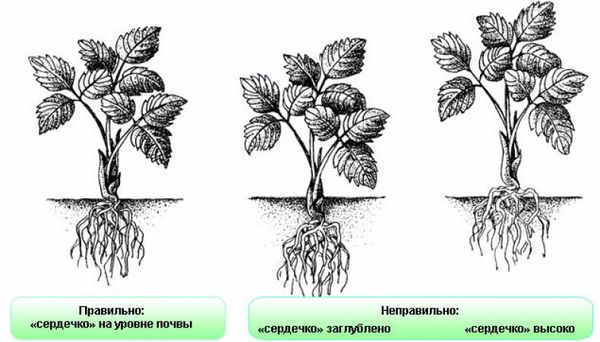

Landing patterns
Gardeners in practice mainly use 3 schemes for planting strawberries in autumn and summer:
- Nesting. In the center of an imaginary structure, one strawberry bush is planted and 6 more bushes are placed from it, at a distance of 30 cm, with an interval of 45 cm between them.This scheme is good if subsequent reproduction with a mustache is planned, since there is where to root them.
- Carpet. According to this scheme, the bushes are placed on the site in a continuous way at a distance of 25 cm from each other. This arrangement is great for small beds.
- Private. Strawberries are planted in rows at a distance of 50 cm from each other, and the interval in a row between the bushes should be 25 cm. According to this scheme, strawberries are usually planted using a covering material.
Important! When planting, choosing the distance between the bushes, varietal characteristics must be taken into account. Strong and spreading varieties will need more space, while compact varieties will need less.
Stages of planting strawberries in open ground
If you plan the order of actions correctly, the work on planting strawberries will take place without problems and with high quality.
Here are the steps for landing:
- The soil on the site should be loosened and leveled. Mark the places where the rows and holes will be held in combination with the accepted scheme.
- Dig holes up to 15 cm deep. Water them before planting.
- Make mounds out of the soil in the middle of the holes. Place the seedling on a mound from above and spread its roots along the slopes of the mound.
- Holding the bush with your left hand, cover the roots with earth with your right so that the root collar is flush with the ground.
- Tamp down a little and moisturize well. Top the soil with peat chips or humus.
The main ways of breeding strawberries
Several methods are used to propagate strawberries:
- mustache;
- dividing the bush (well suited for varieties that do not have a mustache);
- seeds (used for spring sowing);
- purchase of ready-made seedlings.
Below we will take a closer look at all these methods.
Mustache landing
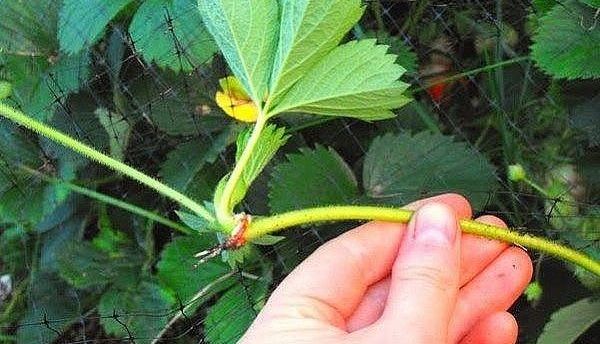

This method of obtaining material for planting is convenient and fairly common. For this, a mustache that has formed during the current season is used. During the summer, gardeners grow strawberry bushes against a high agronomic background in order to get a mustache from them. The emerging young mustache also requires increased attention.
To obtain good seedlings by this method in the fall, you need to dig in the first mustache growing from the bush during the summer for its subsequent rooting. And the rest of the mustache that will appear from the bush must be torn off in order to redirect all power to the formation of a new outlet from the left mustache. By the time of autumn planting, good planting material is obtained from such a mustache.
Planting by dividing the bush
When we need to propagate beardless strawberry varieties or when there is a lack of young bushes, we resort to dividing the mother bush. For this, seedlings are selected at the age of 2-3 years.
When dividing the uterine bushes into 2 parts, you need to separate both parts so that in each there is a well-formed growth point and several good roots. Planting strawberry bushes in the fall in open ground should be carried out in cloudy weather or in the evening.
In order to avoid diseases and pest attacks, the seedlings are immersed in roots for 60 minutes in a solution consisting of the following components:
- water - 8 liters;
- insecticide "Aktara" - 1.4 g;
- fungicide "Previkur" - 6 ml.
This event will help protect strawberry bushes from pests and diseases in the year of planting.
Landing on agrofibre
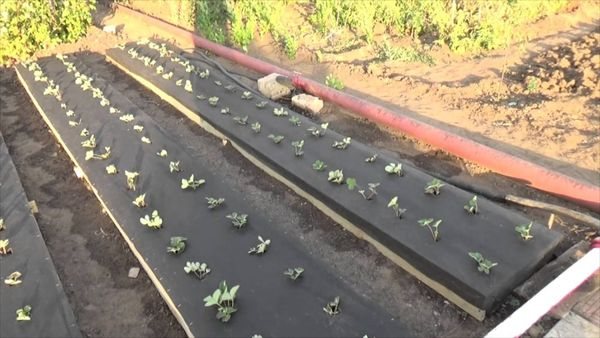

Nowadays, a new method of planting strawberries on agrofibre, which is also called spunbond, is gaining popularity. This material is an ecological fabric with sufficient moisture and air permeability.
By planting strawberry bushes under a black film, a significant reduction in labor costs and money spent on plant care activities, as well as an increase in berry yield, is achieved.
Planting strawberries on a covering material has the following advantages:
- the soil is kept moist and loose;
- bushes are protected from frost, drought, precipitation and other negative natural phenomena;
- weeds do not grow under the covering material;
- the material does not allow unnecessary mustache to take root;
- protects the plant from harmful insects and decay;
- the berry will always be clean.
Such material serves for 4 years, that is, until strawberries are transplanted, which gives additional convenience.
Soil preparation, when planting on a covering material, is not much different from the usual planting on a garden bed and proceeds as described below.
- After completing all the preliminary work, the site is covered with covering material. Its edges must be secured with iron staples, boards or stones.
- When pulling the covering material, you need to strive for it to be closer to the ground. Otherwise, all its advantages over the traditional planting of strawberries are smoothed out.
- After laying and securing the covering material, cuts are made above the planting holes with a knife.
- At the final stage, strawberry bushes are planted in the prepared cuts.
Below you can find useful videos about planting strawberries in autumn for covering material.
Care after landing
Above, we looked at how to plant autumn strawberries. However, the planted strawberry bushes require appropriate care for good rooting and adaptation in the year of planting.
Before the onset of winter, caring for seedlings consists of measures to help provide conditions for strengthening young bushes and preparing them for winter.
To achieve these goals, a set of measures should be performed, including the following actions:
- Watering and loosening the soil. Immediately after planting and during the first 10 days, the strawberries should be watered daily. Water should be poured little by little, from a watering can, avoiding moisture on the leaves. Watering is carried out in the morning. After rooting the bushes, the frequency of watering is halved, but more water is poured into the holes.
- Removal of tendrils and weeds. It is still warm enough in autumn. Weeds can grow on strawberry beds, and tendrils can appear from planted bushes. Both those and others take up moisture and nutrition, interfering with the strengthening and adaptation of the planted material. Therefore, they should be removed.
- Protection from pests and diseases. To achieve these goals, the leaves and soil are sprayed with Karbofos and Bordeaux liquid.
- Additional mulching. For better overwintering, it is recommended to additionally mulch the soil with straw, sawdust or peat. The thickness of the mulch is made 5 cm or more.
Diseases and pests of strawberries
Autumn processing of strawberries is an important stage, ignoring which it is impossible to achieve good yields for the next season. Disinfection of bushes allows you to get rid of pests lurking in the surface soil layer. To do this, loosen the area to a depth of at least 10 cm. Then spray it with a solution: powdered Karbofos (3-4 tablespoons) on a ten-liter bucket of water, which is infused at room temperature before use. After the procedure, the allotments are covered for 2-3 hours with polyethylene.
Of the diseases, strawberry plantations often infect infections of fungal origin:
- powdery mildew;
- rot: gray, black;
- spotting: brown, white.
Autumn processing with appropriate means helps to keep the culture safe and sound until spring.
A wide range of fungicidal preparations is now on sale. It is preliminarily recommended to consult with the seller or an experienced gardener, who will recommend the most appropriate option.
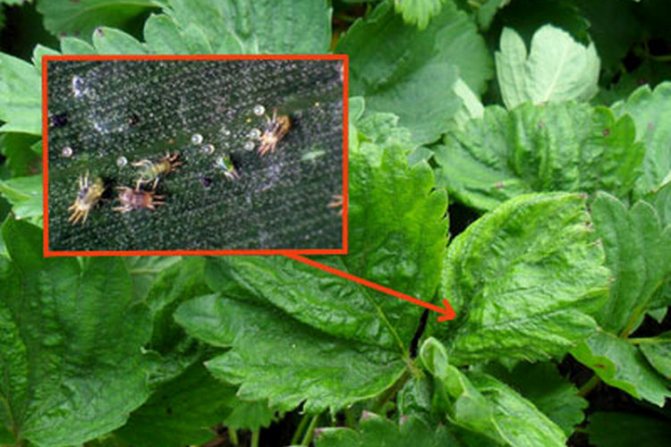

The following remedies have shown a good result in relation to counteracting powdery mildew:
- Sulfaride - prepare a solution of 80 g and 10 liters of water.
- Colloidal sulfur - for the preparation of a 1% solution, a ratio of 1:10 is adhered to.
- Potassium permanganate or potassium permanganate, diluted in low concentration.
- A mixture of copper sulfate (5-6 g), soap shavings (200 g) and 800 ml of liquid.
The resulting liquids produce surface pollination of the bushes. Dissolved zinc sulfate is used for watering the root zone. Another effective suspension is Topaz, sold in ampoules. One bottle diluted in 10 liters of water is enough to process a large-scale berry plantation.
Other pathologies help:
- copper oxychloride;
- Nitrofen;
- bordeaux suspension.
Opponents of radical measures give priority to more lenient means. Ingredient composition of one such substance:
- 10 liters of water;
- 60-70 g of wood ash;
- 90 ml of hot vegetable oil;
- 50 ml of table vinegar;
- 400 ml of liquid soap.
All components are thoroughly mixed until a homogeneous consistency is obtained. The strawberry beds are sprayed with a spray bottle, trying to cover not only the foliage, but also the substrate. More details on how to treat strawberries in the fall from diseases and pests are described in our article.
Common mistakes
It so happens that even experienced gardeners make mistakes when planting strawberries in the fall in open ground. The cost of these mistakes is very high, as a result, it will result in the loss of part of the crop or the death of plants.
In order to avoid mistakes yourself, you need to get acquainted with the most common mistakes gardeners make, which are listed below.
- Deepening the root collar into the soil. If it is below ground level, the plant may stop growing or die.
- Roots too long. If the roots of the planting material are too long, they will bend when planting and will not be able to properly provide the plant with nutrition. Long roots must be shortened to 7 cm.
- Chopping berries and poor harvest. This happens when strawberries are kept in one place for a long time. Strawberries need to be transplanted to a new location every 4 years.
- No mulching. The soil that is not covered with mulch can overheat in the summer, which leads to an increased outflow of moisture from the root layer. As a result, the roots dry out and plant disease.
- Saplings have a lot of leaves. If the seedling has too many leaves, root depletion occurs after planting, which can lead to the death of the strawberry bushes.The optimal seedlings are those that have 3 leaves.
Subject to all the rules and conditions for planting strawberries in the fall in open ground and under agrofibre described in this article, you can achieve good rooting of strawberry seedlings. Strong and viable bushes will reward you with a good harvest next year. With an autumn planting, the gardener has enough time to perform all the necessary work with high quality.
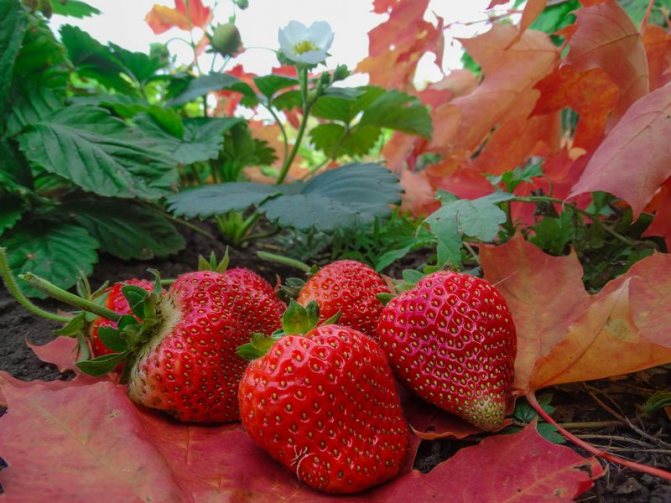

Strawberry beds have long been a decoration for garden plots and farms. The early berries are transplanted in spring and autumn. The plant is not afraid of frost and perfectly tolerates frosts down to -30 0 С under snow cover. Therefore, you should not think for a long time whether it is possible to plant strawberries in the fall. Planting in autumn before the onset of frost has a number of advantages that must be skillfully used.
How to plant trees correctly
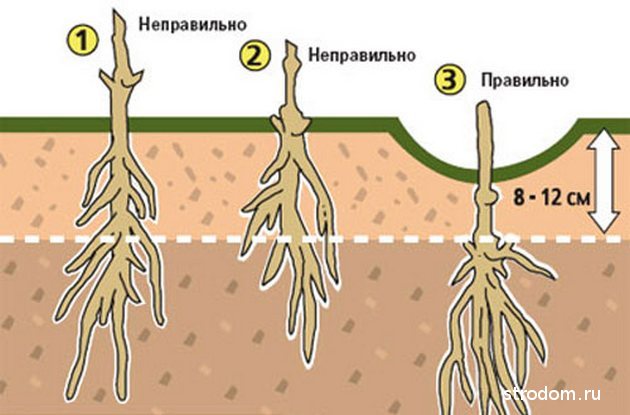

correct root placement
I hope you don't think that planting a tree is digging a hole, sticking a seedling in there and filling it with earth? Scientifically speaking, for a successful planting process, a number of rules must be followed under which the tree could form an active functional root system as quickly as possible, i.e. so that it takes root and receives the necessary substances and moisture for the development of the crown. I wanted to tell you about these rules, and for this you need to answer 3 questions, namely - what? as? when? Almost? Where? when?)
WHAT?
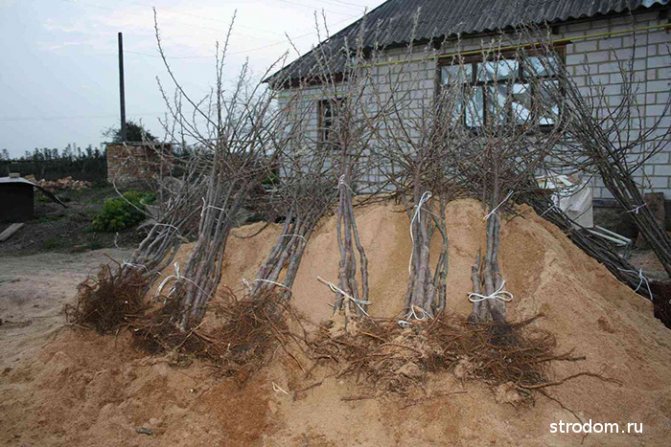

selection of seedlings
What to consider when buying, unless, of course, you buy this seedling, and do not dig it up in the forest or in a neighboring area. I think it is worth highlighting a few simple rules: Purchase from a specialized horticultural enterprise or a large company where you can get the necessary advice. It is desirable that there be a label indicating the variety and breed. So that the seedling does not have any distortions of the crown, a crooked trunk, an uneven distribution of branches along the trunk. And at least there should be 3 skeletal branches. There should be no signs of damage or disease. If the seedling is in a container, then the roots should not break through the drainage hole. If the seedling is packaged, then the earthen ball should be dense and proportional to the aboveground part. Seedlings with an open root system should not have any damage to the roots, signs of disease, the roots should not be overdried. And also all the leaves of such seedlings must be removed.
WHEN?
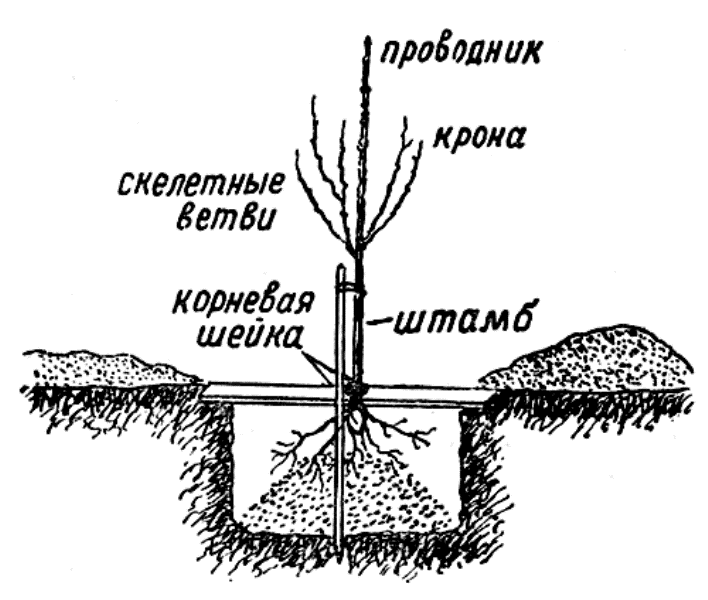

correct disembarkation
When to plant? Here I see two options: In the fall. The leaves have fallen off and the tree does not need to spend energy on feeding the crown, so it is engaged in the development of a new habitat. But one thing is that winter-hardy varieties are planted in the fall, for example, apple trees, pears, berry and ornamental shrubs. In the spring. More thermophilic varieties are best planted in early spring, otherwise they will not have enough time to prepare for winter. This applies to apricot, cherry, plum, cherry plum, low-winter-hardy varieties of pears and apple trees. The planting time of a large-sized tree differs from, for example, planting lilacs, which are planted from the second half of July to early September. P.S. In this case, I meant the landing time in those areas where summer and relatively good weather lasts only 3-4 months. P.P.S. Seedlings in containers can also be planted in summer, the main thing is that the roots are not overdried.
AS?
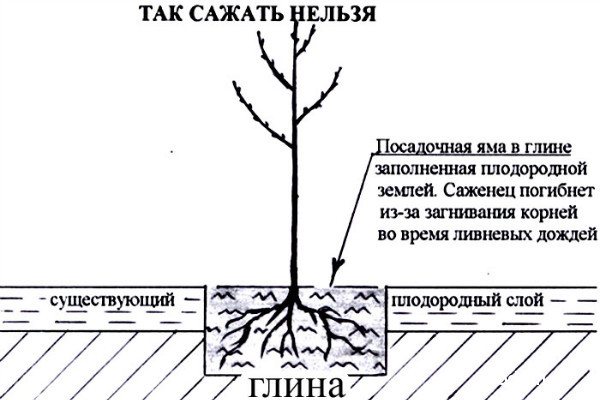

wrong landing
And now the landing itself, only 9 stages: Outline the landing site. Here we think and plan the development of the future tree for years to come, so that it does not interfere with anything and has the opportunity to grow unhindered. We outline a place and mark a hole, which in width should be 2 times larger than an earthen lump with roots. Dig a hole. We separate the upper dug out fertile layer from the lower one and pour them on different sides of the pit. Loosen the bottom of the pit. This is done to make it easier for the roots to go deeper into the lower layers of the soil. Fertilize the planting soil.The top layer of soil, which we separated, is diluted with matured compost or humus (You can read where to prepare compost here). We also add pre-prepared fertile soil and mineral fertilizers. The lower unused layer of soil can be used to fill holes on the site, if any) Drive in a support number. We install the support even before planting so as not to damage the roots, as a rule, it is needed for large plants. Place the seedling in the hole. Sprinkle a little of the prepared earth on the bottom of the pit and set the seedling vertically. At the same time, we do not sink the root system into the soil (we do not deepen it), the root ball of earth should only be slightly sprinkled with earth on top. After all the work, the soil level in the planting pit, taking into account the future precipitation, should be about 5 centimeters higher than the level of the rest of the site. Cover the hole with earth. I think it is obvious that before filling the hole you need to remove what the root ball of earth was wrapped in, it can be burlap, paper, etc. Tie the seedling to the support. In the form of a figure of eight, tie the seedling to the support with a soft twine. The string should not cut too hard into the bark of the tree. Water the planting well. We compact the earth around the trunk, and along the edges of the pit we make an irrigation roller. We water the near-trunk circle well (so that the roots come into contact with the soil), after which we sprinkle (mulch) it with peat or humus by 5 cm.
How to plant strawberries in the fall. Preparatory stage
When planning a breakdown of a new strawberry garden on the site, they carry out serious preparation:
- The choice of quality planting material. It is divorced in advance in old beds or bought on the market, taking into account the amount required for planting in a certain area. For autumn planting of strawberries, seating with a mustache and rooted rosettes is more suitable.
- Determination of the site for planting the prepared material. Strawberries love the sun, but do not tolerate drafts. The garden bed for planting strawberries in the fall should be flat so that the water does not go to the sides during watering and does not stagnate.
- You need to know after which crops you can plant strawberries in the fall so that the plant does not suffer from pests and fungal diseases. The best siderates for strawberry planting are legumes, radishes, onions, and garlic. These plants leave behind nitrogen fertilizers and other useful substances. You cannot call strawberries "friends": cabbage, tomatoes, cucumbers, potatoes, peppers, as well as asters and marigolds.
- The plant is unassuming to the structure of the soil. But the superficial root system requires nutrients and oxygen. Therefore, the soil is fertilized with manure and ash before digging. Be sure to inspect to exclude the accumulation of May beetle larvae, scoops and other pests. To guarantee the site is treated with ammonium nitrate or other preparations that help destroy insects and fertilize the land.
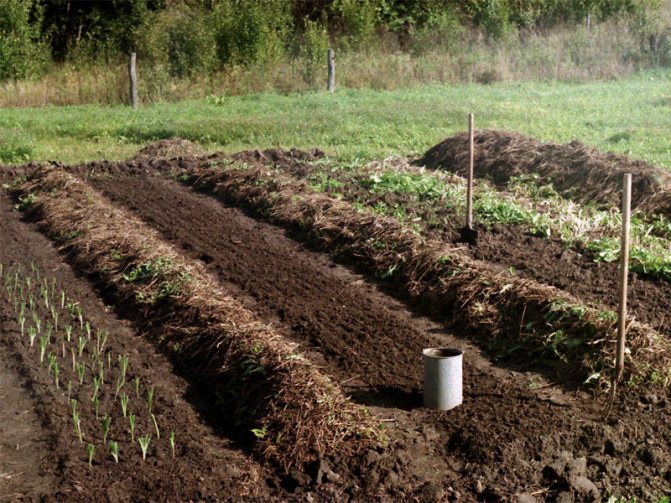

If all agrotechnical standards are met, you can proceed to the main task. We plant strawberries correctly in the fall after preparing the planting material. Strawberries are capable of active reproduction.
After the end of the fruiting period, the bushes grow to the sides with tendrils, at the ends of which a rosette grows. At first, the socket has only aerial roots, but upon contact with the ground, the roots stick.
Both antennae and sockets are suitable for planting in a new place. Strawberry whiskers in autumn are fresh, strong and quickly take root in a new place.
Care after
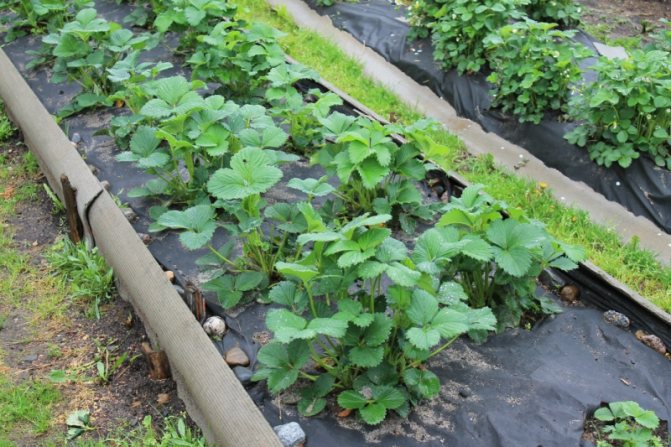

To obtain high yields of strawberries, proper and regular maintenance is required after planting in the soil.
It is necessary to perform a whole range of activities:
- watering;
- top dressing;
- mulching;
- treatment against pests and diseases;
- mustache cutting and reproduction;
- shelter for the winter.
Watering
Regular moistening of the soil under the plants will increase the yield.Watering strawberries after planting is required every day, after - once every 2 days.
The liquid must be used at room temperature. Host such an event in the evening. In the arid region, it becomes necessary to establish a drip irrigation system.
Fertilizer
During the appearance of buds, you should make:
- potash fertilizers - potassium sulfate, potassium chloride;
- to increase the yield will allow treatment with boric acid in a ratio of 1 tsp. powder per 10 liters of water;
- during flowering, fertilize plants with potassium nitrate, ash and chicken droppings.
At the end of the harvest, feeding is required in the form of nitroammofoska (2 tablespoons per bucket of water). To enhance the future harvest, it is advisable to feed the plant with urea (30 g per 10 l of water).
Mulching
The spring mulching procedure will protect flowers and berries from touching the soil, before the winter period will protect them from frost.
For this purpose, you can use:
- organic matter - manure, leaves, grass cuttings, humus;
- inorganic agents - small stone, polyethylene;
- special paper.
Fight
It is important to treat plants in a timely manner against harmful insects and diseases.
This activity can be accomplished by using:
- chemical compositions;
- mechanical techniques - weeding, digging;
- planting repellent plants.
Pruning and reproduction
Strawberries can be grown by seedlings, seeds, dividing the bush. Mother plants produce whiskers. To propagate the culture by layering, it is necessary to leave the longest and strongest mustache on this bush, cut off all the rest. For the winter, the strawberries should be cut more, leaving only young shoots.
Shelter for the winter
In harsh winter climates, when temperatures drop below 20 ° C, shelter of the strawberry bushes is required. This event will protect the root system of the plant from freezing, especially if the winter is not very snowy.
When establishing regular frosts, the bushes cover:
- straw;
- spruce branches;
- hay;
- special agronomic fiber.
With the arrival of spring warming, the shelter is removed in order to prevent overheating of the root system. The land should also be cleared of the remains of the covering material and be sure to loosen the soil around the berry bush.
When and how to plant strawberries in autumn
Planting new strawberry beds in the fall has several advantages:
- Strawberries in the fall gives a lot of planting material;
- The harvest of early berries is ensured already in the next season, while the spring planting gives a harvest only after a year;
- In autumn, strawberry seedlings take root in the ground much faster, since the soil is warmed up by the summer sun, it rains in autumn, and sufficient moisture is created for the antennae.
When to plant strawberries in autumn
For the normal survival of seedlings in the winter, it is necessary not to miss the timing of planting strawberries in the fall. The time is chosen depending on the climatic conditions in the region. In the middle lane, they begin to arrange strawberry beds in late August or early September. It all depends on the rains.
If there is a drought, you should not rush to transplant the culture. Otherwise, you will have to deal with additional watering, which does not guarantee one hundred percent survival of the planting material. Late planting of early berries is allowed in early November, but only in warm weather.
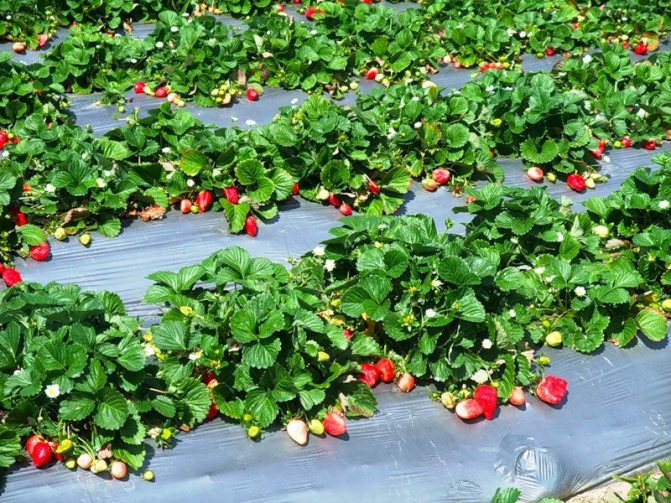

They do not refuse mulching strawberry beds in the southern regions either. Sudden frosts can completely destroy plants that are preparing for early flowering.
Scheme of planting strawberries in autumn with a mustache and rosettes
Method 1. Planting a mustache. For the appearance of roots, the first antennae growing from the mother bush are sprinkled with earth. The excess processes are removed to form the main rosette. After two weeks, a seedling is formed, ready for transplantation.
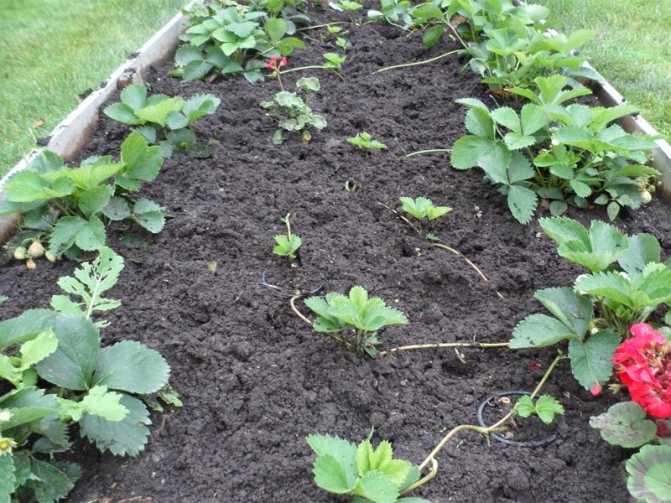

Method 2. Seating outlets. When a rosette with air roots is formed on the first mustache, it is added dropwise, and the tip of the mustache is cut off.Thus, the growth of the antennae in length is suspended. The rooted outlet is cut off from the mother bush and transplanted to a new location.
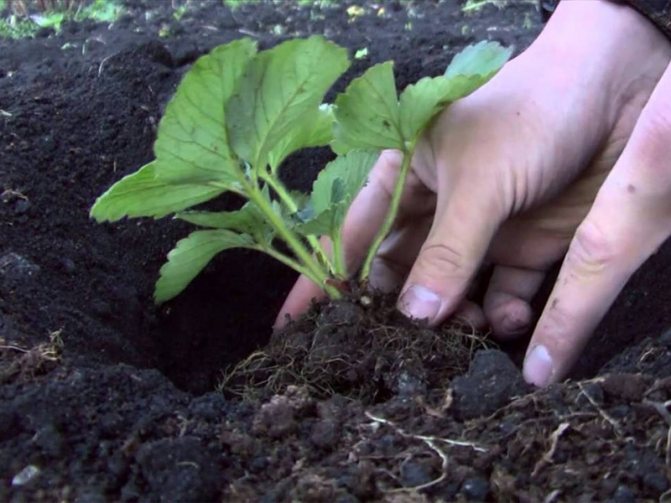

Planting strawberries in autumn is carried out using different technologies:
- in the open field;
- using covering material.
Both technologies are tested in practice, have their pros and cons depending on the climate, soil and the timing of planting strawberry bushes.
Advantages and disadvantages of autumn planting
There is only one drawback of planting in the fall - the strawberries may not have time to take root in a new place, the leaves will die from the first frosts, and behind them the roots. Therefore, always check the weather forecast. Planting should be carried out a month before the arrival of frost. Even within the same region, these terms change every year.
Otherwise, the autumn planting has solid pluses:
- The weather is favorable for taking root seedlings - cool and damp.
- Less time passes before harvesting the first harvest - winter and spring, which means that labor costs for care are also reduced. When planting in spring, the first berries will be only a year later, because young seedlings should not be allowed to bear fruit during the planting season.
- The strawberry seedlings for sale are fresh, grown this summer, they were not stored in basements and refrigerators over the winter. At the same time, prices are lower than in spring.
- A richer assortment of varieties is on sale, in the spring there are only leftovers that are not sold in the fall.
- If you are ordering seedlings from another city, then in autumn the weather conditions are more favorable than in spring for the transportation of living plants.
Video: planting strawberries in the fall on a farm field
How to plant strawberries outdoors in autumn
Having prepared healthy planting material and having decided on the optimal timing for transplanting strawberries, you can get to work. On the site where it is planned to plant strawberries in the fall in open ground, use:
- square-nesting method: the main bush is planted, around which at a distance of 30 centimeters, 6 more bushes are placed; the nests are placed 45 cm from each other so that the antennae can grow and provide a sufficient number of outlets for seating;
- carpet method: the bushes are planted continuously at a distance of up to 25 cm.
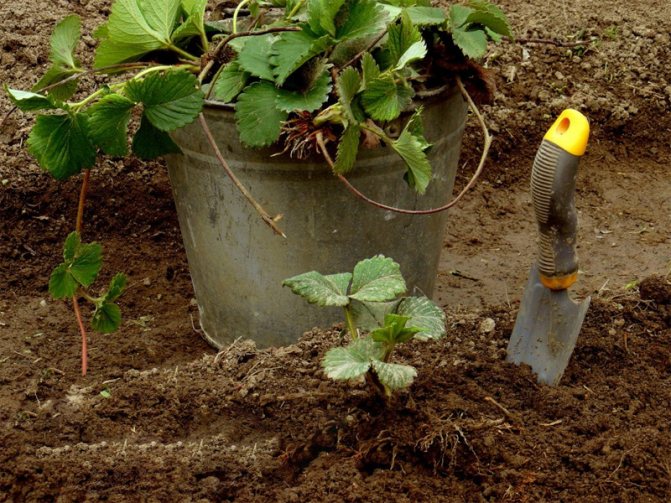

An early berry takes root in autumn days, if you know how to properly prepare a bed for planting strawberries and apply fertilizer. The strawberry reaches for the sun, so a site for it is chosen on a hill, dug up, weeds are removed, fertilizers are applied (organic matter, potash and phosphorus substances, ammonium nitrate, etc.)
The day for planting is chosen overcast, but warm. If there is no rain, the soil is specially moistened. They take a young bush and plant it in stages:
- make a hole 10-15 cm deep in a certain place;
- a tubercle is formed in the center of the fossa;
- plant roots are laid on a hill and straightened;
- the roots are sprinkled with earth and lightly tamped;
- the place from which the leaves grow is left flush with the ground.
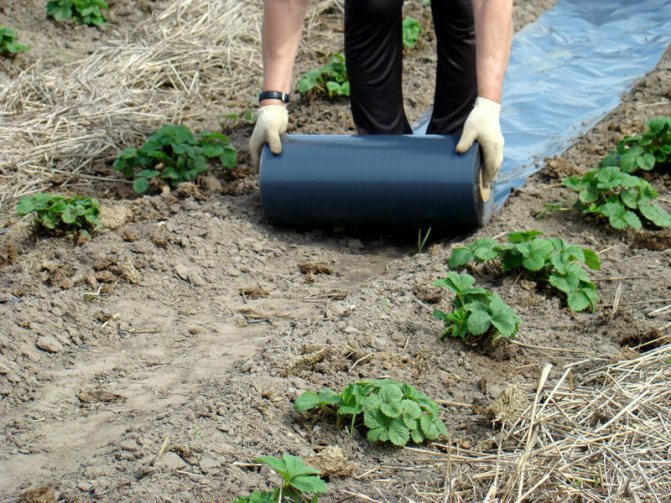

Care for strawberries after planting in the fall
When the planting material is planted in open ground or placed on a covering material (film, spunbond, roofing material, etc.), the beds are thoroughly watered. Further watering of plants is carried out as needed, if the autumn is dry.
Excess moisture can lead to decay of the roots, therefore, watered when the lumps of earth dry out. Regular watering is carried out for the first 10 days, while the plant hardens in a new place. Watering is best in the morning, avoiding drops of water on the leaves.
Drip irrigation is considered the ideal method. If the soil is open, you need to loosen the soil and remove weeds.
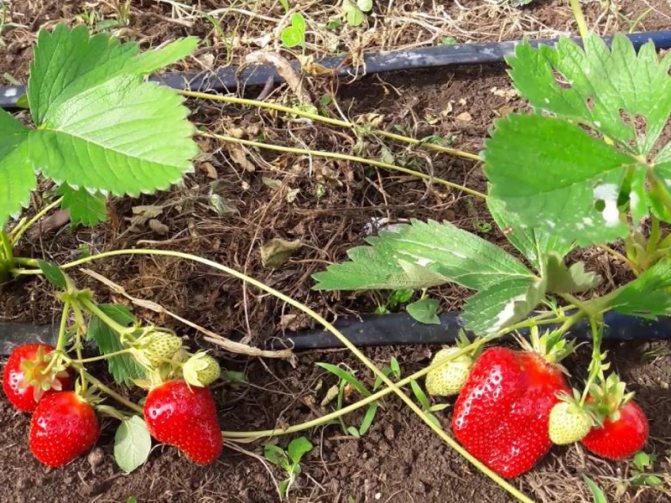

Strawberries planted in a timely manner enter the winter rooted and strong. The plant is not afraid of frosts if the soil in the garden is mulched with straw, sawdust, compost or humus. In the spring, the excess mulch is removed by loosening the soil between the bushes.The agrotechnical standards fulfilled when planting strawberries in autumn will allow you to get a generous harvest of berries at the beginning of the next season.
Planting shrubs
Seat selection
When planting shrubs, take into account:
- illuminance of the site by the sun;
- the degree of soil moisture;
- soil composition.
Distance between bushes
To determine the optimal distance between the bushes, you need to add the height of 2 adjacent bushes and divide the resulting amount by 3.
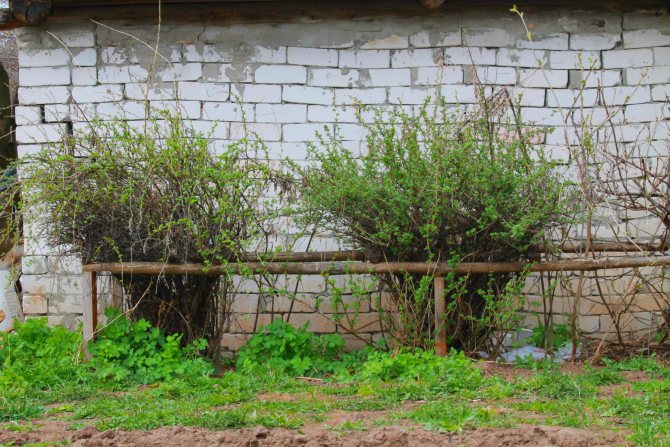

Distance between bushes

